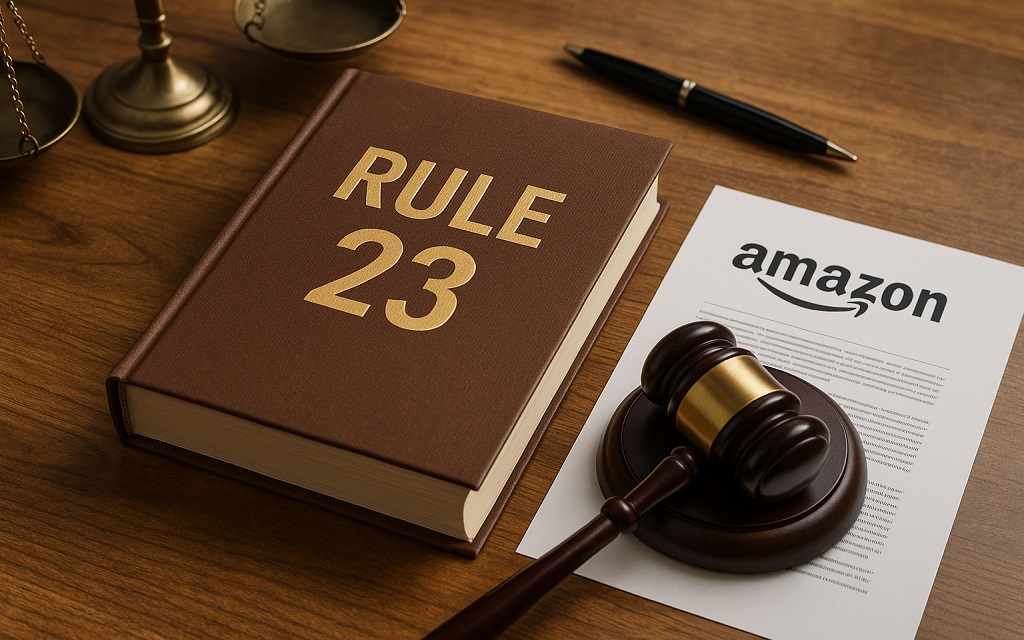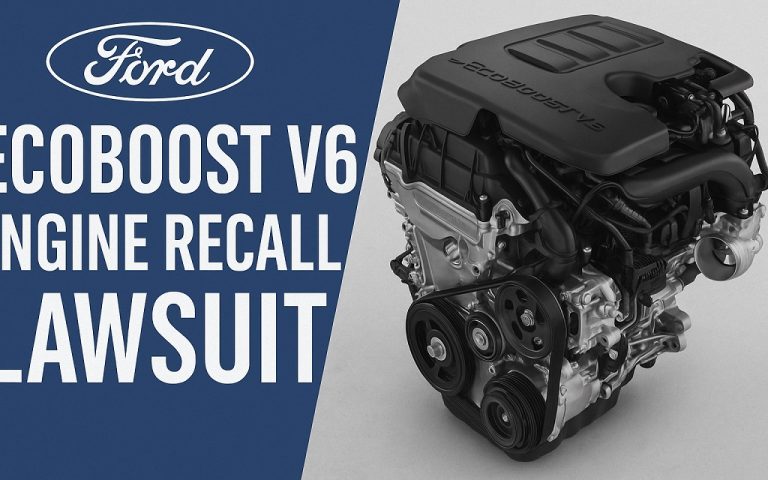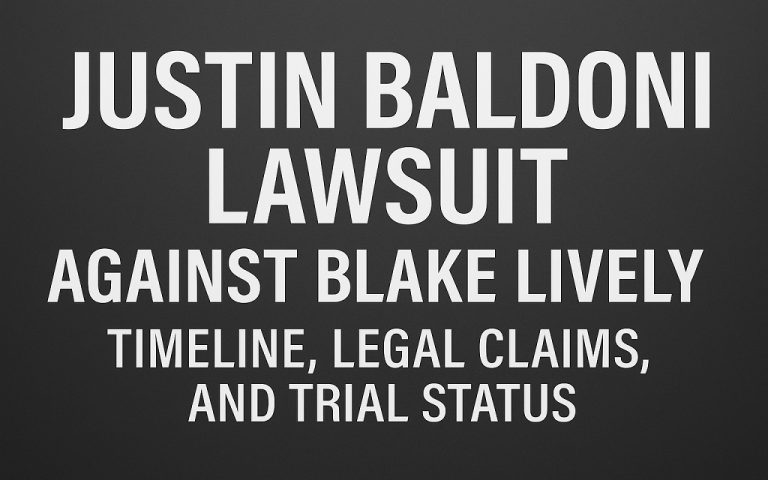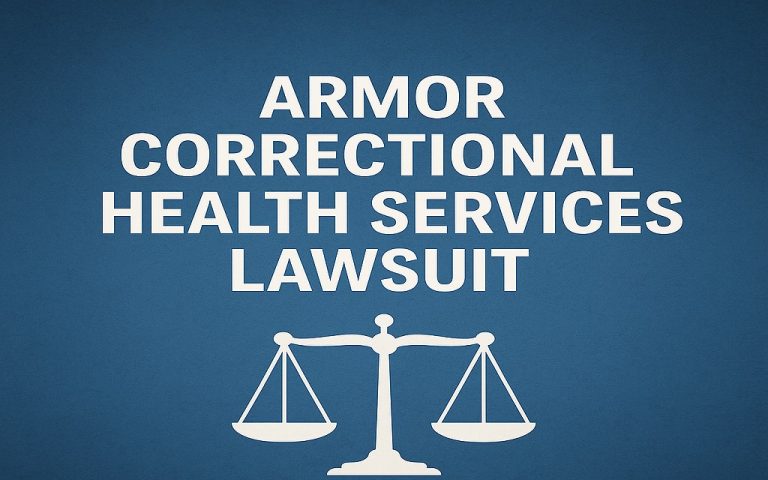Are you curious about how the Rule 23 Amazon lawsuit can impact your rights as a buyer or seller? You’re not by yourself. This contentious legal dispute has the potential to change how Amazon functions and how millions of users seek justice or recoup damages. The Rule 23 Amazon lawsuit centers on claims that Amazon used unfair platform policies to suppress competition, inflate prices, and hurt third-party sellers.
This article explains all you need to know regarding class certification, payouts, and opt-out rights. If you’ve used Amazon in the past few years, the Rule 23 Amazon lawsuit may include you. Continue reading to find out what’s going on, who is eligible, and how to safeguard your claim.
What is Rule 23, and Why it Matters in the Amazon Lawsuit?
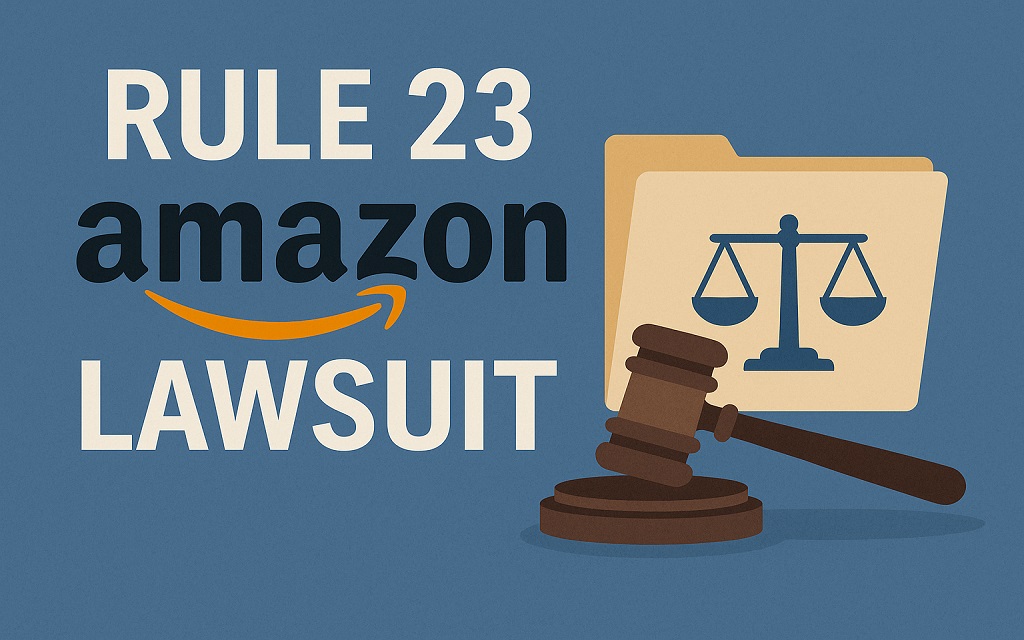
Class actions in US federal courts are governed by Rule 23 of the Federal Rules of Civil Procedure. It establishes the legal standards for determining when one individual or a small group of individuals may file a lawsuit on behalf of several other individuals. This rule is fundamental if you are a buyer or seller on Amazon. It could shape your right to recover money or challenge unfair practices.
Amazon was sued by 17 states and the Federal Trade Commission (FTC) in late 2023. They claimed that Amazon punished sellers, raised prices, and blocked competition by abusing its market dominance. The case does not seek money for individual users. It asks for a court order to stop Amazon’s conduct. But this kind of lawsuit can lay the foundation for a Rule 23 private class action. When private lawyers file one, Rule 23 governs everything—from who joins to how payouts happen.
What Rule 23 Does
Rule 23 allows courts to approve group litigation. This works when:
- Many people are harmed in a similar way
- It makes sense to decide all claims at once
- One ruling can bind all parties fairly
If the court agrees, it certifies a “class.” The lawsuit becomes a class action, and people in that class may receive notice, settlement rights, or opt-out options. For example, if Amazon sellers paid inflated fees due to platform rules, a Rule 23 case could cover all affected sellers—without requiring each one to file separately.
Why the Amazon Case Fits the Rule 23 Pattern
Even though the FTC case is public and not a Rule 23 class action, its claims set the stage. It outlines:
- Uniform policies Amazon used across all sellers
- Fee structures that impacted most vendors
- Search rankings that hid low-price rivals
- The FBA program rules that limit outside options
- A pattern of harm that could apply to a broad group
That pattern is key. If the same rules harmed sellers or buyers, lawyers may argue that common questions dominate, one of the biggest hurdles in Rule 23.
A future private case might rely on the FTC’s evidence. Rule 23 lets plaintiffs build from this base, but they must prove:
- The group is large enough
- Common questions drive the case
- Class reps are typical and adequate
- A class trial makes sense
These are the core requirements under Rule 23(a). We’ll explain each in the next section.
Rule 23(a) Requirements: Numerosity, Commonality, Typicality, Adequacy
Before any class action can move forward, Rule 23(a) sets forth four hurdles. These conditions apply to every case. If one fails, the court denies certification. In the Amazon context, all four matter—especially because millions of buyers and sellers use the platform.
1. Numerosity: Too Many for Individual Suits
Rule 23(a)(1) requires a group so large that joinder becomes impractical. Courts rarely set a fixed number. But when plaintiffs show hundreds—or thousands—of similar claims, this standard usually clears.
In Amazon’s case, the numbers of sellers and buyers reach the millions. Affected users span across states and borders. That scale supports numerosity. It proves that class treatment saves time and court resources.
2. Commonality: Shared Legal or Factual Questions
Rule 23(a)(2) demands at least one common question. It must drive resolution for the group. The issue cannot just overlap. It must apply across all class members in a meaningful way.
Here, the FTC outlines multiple standard policies:
- Amazon allegedly punishes sellers for offering lower prices elsewhere
- It ties Prime eligibility to Fulfillment by Amazon (FBA) use
- It allegedly inflates fees by structuring ad visibility around spending
- It uses price monitoring tools like “Project Nessie” to suppress competition
All these policies affect large groups of sellers. They also touch buyers, who may pay more due to suppressed price competition. That shared conduct supports commonality.
3. Typicality: Class Rep Claims Mirror the Group
Rule 23(a)(3) tests whether the class representative’s claims match the class. The harm does not need to be identical. It must arise from the same course of conduct.
For Amazon sellers, if one vendor paid inflated fees due to platform-wide policies, and others did too, that’s typical. For buyers, if Amazon’s algorithm buried cheaper options, and multiple users paid more as a result, the claims align.
The key is the source of harm. If Amazon’s core practices created the injury, then it typically holds.
4. Adequacy: The Class Rep Can Stand for the Group
Rule 23(a)(4) requires adequate representation. The court asks:
- Can the named plaintiffs protect the class?
- Do their lawyers have experience with class action law?
- Are there conflicts of interest?
In private Amazon sales, sellers come in all sizes, ranging from solo sellers to large vendors. If one seller dominates the lawsuit but especially benefits from Amazon’s tools, adequacy could fail. The same applies to buyers. A buyer who uses Amazon differently from the average person may not accurately represent the group.
Courts look closely here. They reject reps who bring baggage or who don’t understand the case.
Rule 23(b) Categories: (b)(3) Damages vs (b)(2) Injunctive Relief
Once a case meets the Rule 23(a) standards, it must also fit into one of the Rule 23(b) types. These categories define what kind of relief the plaintiffs seek. In lawsuits like the one involving Amazon, two main options come into play—Rule 23(b)(3) and Rule 23(b)(2).
Each serves a different purpose. One focuses on money. The other targets behavior change.
Rule 23(b)(3): Damages for Class Members
This is the most common path in consumer and antitrust class actions. It applies when class members want financial compensation. The court asks two main questions:
- Do common questions dominate over individual ones?
- Is a class action superior to individual lawsuits?
This is called the predominance and superiority test. It’s more complicated to pass than Rule 23(a). But when successful, it gives powerful rights. Members can get notice. They can also opt out if they want to sue alone.
If private plaintiffs sue Amazon under Rule 23(b)(3), they may claim:
- Overcharges from inflated product prices
- Excessive seller fees tied to FBA or advertising rules
- Losses from anti-discounting policies that blocked lower prices elsewhere
They must show that these harms can be proved using common evidence. Economic models must match the theory of harm. If one buyer’s injury looks too different from another’s, the class may fall apart.
Rule 23(b)(2): Injunctions Against Company Behavior
This category fits cases seeking to stop illegal conduct—not to recover money. It works when the defendant acts in a way that affects all class members the same way.
The FTC’s Amazon lawsuit asks for precisely this. It seeks a permanent injunction. That would block Amazon from using practices like:
- Price-parity policies
- Tying Prime visibility to FBA use
- Search and ad design that favors in-house brands
If private parties follow suit, they may use Rule 23(b)(2) to stop those actions as well. In this setup, no notice or opt-out is required. The focus stays on future conduct, not past harm.
Courts allow both (b)(2) and (b)(3) in the same case—but only if each has clear legal grounds. Plaintiffs must separate the proof and class definitions. Injunctions cannot sneak in damages. And damages cannot sneak in through injunctions.
Quick Comparison
| Feature | Rule 23(b)(3) | Rule 23(b)(2) |
|---|---|---|
| Goal | Money damages | Injunction or declaratory relief |
| Common Questions Must Dominate? | Yes | No |
| Notice Required? | Yes | No |
| Opt-Out Allowed? | Yes | No |
| Examples in the Amazon Case | Buyer overcharges, seller fees | Ban on unfair platform policies |
Class Certification: The Gate That Controls Leverage and Notice
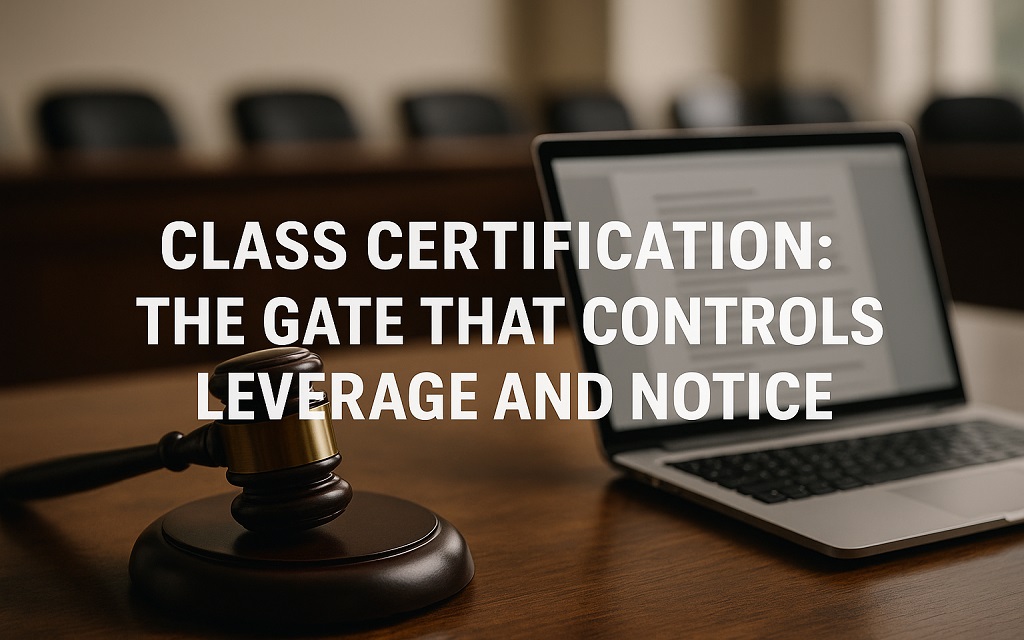
Class certification decides everything. If the court grants it, the lawsuit changes. It shifts from a small claim to a case with massive stakes. If the court denies it, the plaintiffs may lose their strongest tool.
In Amazon cases, certification means one buyer or seller can speak for thousands—or even millions.
What Is Class Certification?
Class certification is a motion filed under Rule 23(c)(1). It tells the judge: we meet all Rule 23(a) and Rule 23(b) standards. The motion includes:
- Legal arguments
- Economic models
- Expert declarations
- Evidence of common conduct
The court holds a hearing. It does not decide if Amazon broke the law. It only determines whether the case should move forward as a class action.
If the court grants certification, the case enters a new phase. It triggers notice, opt-out rights, and settlement leverage.
Why Certification Matters in the Amazon Context
In lawsuits against Amazon, this moment matters most. Amazon may argue:
- Buyers experienced different prices, so their harm varies
- Sellers paid different fees, used different tools, or sold different products
- Some signed arbitration clauses that waive class rights
- The data is too complex to use in one model
Plaintiffs respond with:
- Amazon imposed uniform rules
- Its algorithm worked the same way for all
- FBA and Prime policies affected all sellers equally
- Standard models can prove harmful with marketplace data
The court weighs both sides. It asks: Do common questions dominate? If yes, certification is likely. If no, the class may be denied.
What Happens After Certification
Once certified, the class gets:
- Court-approved notice
- Defined class period
- Opt-out deadline
- Appointed class counsel
Amazon may appeal. It may also settle to avoid a trial. Settlement talks gain traction after certification. That’s because the risk to Amazon rises. A certified class gives leverage.
Courts also require claims administrators at this stage. They prepare systems to track class members, receive documents, and send payments later—if the case wins or settles.
Predominance and Common Proof in Antitrust/Consumer Cases Against Amazon
Predominance is the most challenging hurdle in a Rule 23(b)(3) class action. Courts ask: Do common questions drive the case? Or do individual issues get in the way?
This matters in every antitrust or consumer case. It matters even more in a lawsuit against Amazon.
What Predominance Means
Rule 23(b)(3) says common issues must “predominate” over individual ones. That means the trial must focus on shared facts. It must not turn into mini-trials for each class member.
The court looks at:
- Liability: Can one policy prove harm to all?
- Injury: Can common evidence show that all members were injured?
- Damages: Can the same model estimate class-wide damages?
If the answer is yes, the court may certify the class.
Common Proof in the Amazon Context
In the FTC case, Amazon allegedly used platform-wide rules. These rules affected nearly every seller and buyer. That’s the key to common proof.
For sellers, the policies include:
- Forcing them to raise prices elsewhere
- Linking Prime eligibility to the use of Fulfillment by Amazon (FBA)
- Charging high ad fees to get visibility
- Limiting communication with buyers
For buyers, the FTC alleges:
- Search results favored Amazon’s own products
- Cheaper listings from other sites were buried
- “Project Nessie” inflated prices across platforms
These actions applied across the board. Plaintiffs can use:
- Amazon’s internal data
- Seller fee records
- Buyer transaction history
- Algorithm and search logs
If this data shows uniform effects, it supports predominance.
Where Predominance Can Fail
Amazon may argue:
- Not all sellers use FBA
- Not all buyers were affected by the same search results
- Some prices rose, others did not
- Market definitions vary by product category
These facts could block certification. However, if plaintiffs demonstrate that one core policy harmed the entire group, they win this test. That’s why economic experts matter. Their models must fit the case.
Standing, Injury, and Damages Models in a Rule 23 Amazon Case
A Rule 23 class action fails if the plaintiffs cannot show injury. Without proof of harm, there is no standing. Without standing, there is no case.
This part matters in every lawsuit. But it becomes central in complex antitrust and consumer cases—especially when big tech platforms like Amazon are involved.
Standing: Everyone Must Show Personal Harm
Federal courts require Article III standing. That means each plaintiff must show:
- They suffered a concrete injury
- The injury is linked to the defendant’s conduct
- A court can fix it
In a class action, at least one named plaintiff must meet this test. But courts also look at whether all class members likely suffered the same kind of harm.
If not, the class may not work.
Injury in Amazon Cases
The FTC’s complaint claims Amazon raised prices and blocked competition. That creates two kinds of possible injury:
- Sellers who paid higher fees or lost sales
- Buyers who paid more due to buried listings or inflated prices
To certify a class, plaintiffs must demonstrate that these injuries can be measured uniformly across the group.
That’s hard. Not every seller runs the same business. Not every buyer shops the same way. However, if Amazon’s platform policies cause similar harm through similar tools, then a shared method can be effective.
Standard Damages Models: Overcharge and Pass-Through
Rule 23 requires a damages model that matches the theory of harm. Courts call this the Comcast test—named after a Supreme Court case.
In an Amazon lawsuit, the model might look like this:
- Overcharge model: Amazon’s rules forced sellers to raise prices. Sellers lost revenue or profit due to restricted pricing.
- Pass-through model: Sellers passed those overcharges to buyers. That inflated consumer prices.
Both use Amazon data. This includes fees, pricing rules, sales volumes, ad spend, and algorithm impact. Experts use this to estimate how much each group overpaid or lost.
The model must show class-wide damages. If it requires custom analysis for each seller or buyer, the class may fail.
The Role of Experts
Courts expect experts to:
- Define the relevant market
- Show how Amazon controlled it
- Prove the impact of challenged conduct
- Estimate total harm using statistics
In the FTC case, regulators claim Amazon’s practices affected markets worth billions. Private plaintiffs can mirror that with seller-level or buyer-level models.
If their models align with the harm theory, the case meets Rule 23’s test.
Notice, Opt-Out, and How to Join a Rule 23(b)(3) Class
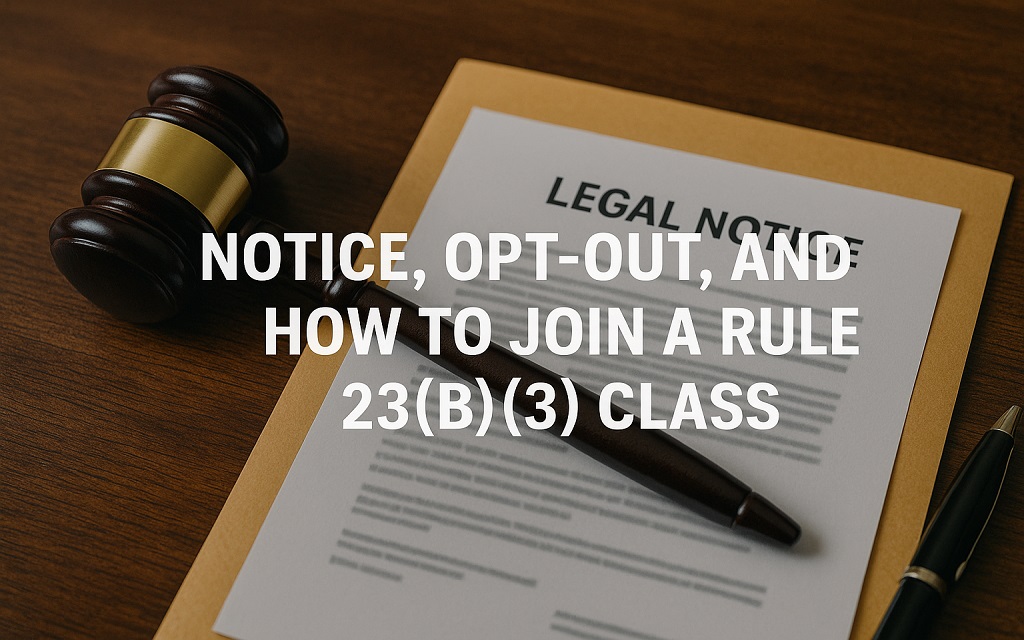
If a class gets certified under Rule 23(b)(3), the court must send notice. People are made aware of their involvement in the litigation through this phase. Additionally, it offers them the option to remain in the class or to leave.
This procedure safeguards the legal rights of each member. It also indicates who is eligible for payment if the action is settled or won.
What the Notice Must Include
Rule 23(c)(2)(B) sets strict rules. The court-approved notice must be clear. It must tell each class member:
- The nature of the lawsuit
- What the case claims and denies
- How to stay in or opt out
- How to hire a lawyer, if needed
- What rights will be lost by staying in
- Where to get more information
The court frequently uses a variety of platforms, including social media, websites, digital advertisements, email, and mail. In a case involving Amazon, this could mean direct platform messages or emails sent to buyers and sellers.
If you bought or sold through Amazon during the class period, and the court certifies the class, you may receive one of these notices.
What Does Remaining in Mean
You remain in the class if you do nothing. This implies:
- You may receive money if the case settles
- You give up your right to sue Amazon on your own for the same issue
- You agree to be bound by the outcome—even if you get nothing
For many users, this is the best option. It costs nothing. It requires no court appearance. You wait for the process to unfold.
What It Means to Opt Out
You can leave the class. This is called opting out. You must follow the instructions in the notice. There’s a deadline. If you miss it, you stay in automatically.
People often opt out if:
- They want to sue on their own
- Their damages are significant and personal
- They disagree with the lawsuit’s goals
Once you opt out, you are no longer part of the class. You cannot receive money from any class settlement or win. However, you retain the right to file your own case.
How to Know If You Qualify
In most Rule 23 lawsuits, you don’t need to apply to join. The court defines the class period and the types of harm that are covered by the class action. If you meet those, you’re in.
For example, a future Amazon class could cover:
- Sellers who used FBA and paid above a certain fee level between 2019 and 2023
- Buyers who paid higher prices due to Amazon’s price parity rules in that same period
The notice will explain this in plain terms. It may direct you to a claims website. You may check your payout status, add papers, and confirm your identity there.
Rule 23(e) Settlement Process: Reasonability, Adequacy, and Fairness
A Rule 23(b)(3) class action settlement requires the court to examine and approve the agreement. This process follows Rule 23(e). The judge does not rubber-stamp it. The court checks every part. It must protect the rights of all class members—especially those who don’t speak up.
How a Settlement Starts
After certification, the parties may reach a deal. That means Amazon agrees to pay money or change its policies. In return, class members release their claims.
Class counsel then files a motion for preliminary approval. This includes:
- A copy of the whole agreement
- A proposed notice to the class
- A plan to distribute money
- A request for attorneys’ fees
The court reviews the terms. If everything looks reasonable, the court grants preliminary approval.
What Happens Next
Once the court approves the notice, the settlement process moves forward:
- Notice goes out to the class
- Members get a chance to opt out or object
- The court holds a final approval hearing
At that hearing, the judge looks at several factors:
- Is the settlement fair and adequate?
- Was it negotiated at arm’s length?
- Does it treat all class members equally?
- Do the benefits outweigh the risks of the trial?
The court also considers objections. Any member who stays in the class may object. They can raise issues about fairness, payout, or fees.
How the Money Gets Distributed
If the court grants final approval, the claims process begins.
Most Rule 23 settlements use:
- Pro rata payouts based on purchase or fee levels
- Tiers for different harm categories
- Deadlines to file claims
- A claims administrator to handle the details
If class members don’t claim all the money, the court decides what happens next. Options include:
- A second round of payments
- Giving leftover funds to charities (cy pres)
- Returning the money to the defendant
The court also rules on attorneys’ fees. Lawyers usually ask for a percentage—often 25% to 33% of the fund. Judges approve the payment only if it’s reasonable and justified.
Sample Timeline
| Stage | Timeframe |
|---|---|
| Preliminary approval motion | Filed after the settlement agreement |
| Notice sent to class | Within 30–60 days |
| Objection/opt-out deadline | Usually 60–90 days after notice |
| Final approval hearing | Set 90–120 days post-notice |
| Payments sent (if approved) | Within 2–4 months after final OK |
Once approved, the settlement becomes binding. Class members cannot sue Amazon separately over the same issue unless they opted out earlier.
What an Injunction Could Mean for Amazon Buyers and Sellers
Most people think class actions only lead to money. But Rule 23 also allows lawsuits that aim to change behavior. These cases ask the court to order companies to cease a particular action. This kind of relief is called an injunction.
In the Amazon lawsuit, the Federal Trade Commission (FTC) and 17 states do just that. They ask the court to stop Amazon’s illegal conduct permanently. A private class action under Rule 23(b)(2) could seek the same.
What Is an Injunction?
An injunction is a court order. It tells a company:
- Stop a certain practice
- Change how a service works
- Remove a policy that harms users
It doesn’t pay money. However, it fixes a problem that affects everyone in the same way.
In a Rule 23(b)(2) class action, the plaintiffs don’t need to show individual losses. They must prove that the company’s policy is generally harmful. If they win, the court orders system-wide changes.
Amazon’s Alleged Practices That Could Be Targeted
The FTC complaint lays out several policies that an injunction could stop:
- Price parity policies: Amazon allegedly penalizes sellers for offering lower prices on other platforms. The court could ban this.
- FBA tie-in to Prime: Amazon allegedly makes sellers use Fulfillment by Amazon to access Prime shoppers. An injunction could force Amazon to separate these.
- Search manipulation: The platform may bury cheaper or better offers. A court could order a transparent ranking.
- Biased ads: If Amazon favors its own brands over third-party sellers, the court may also block that.
Each of these practices affects many users. That supports a class-wide injunction.
How Injunctions Help Buyers and Sellers
If the court grants an injunction, Amazon must comply. That could mean:
- Sellers pay less in fees
- They get more visibility without ads
- They can offer better prices on other sites
- Buyers see cheaper offers in search results
- More price competition returns to the market
These changes do not come with a cash payout. But they help the market stay open and fair. That’s valuable over time.
Enforcement and Compliance
Courts do not just issue injunctions and walk away. They may require:
- Ongoing reporting
- Third-party monitoring
- Follow-up hearings
If Amazon violates the order, it could face fines or new restrictions.
Timeline: From Filing to Certification to Settlement or Trial
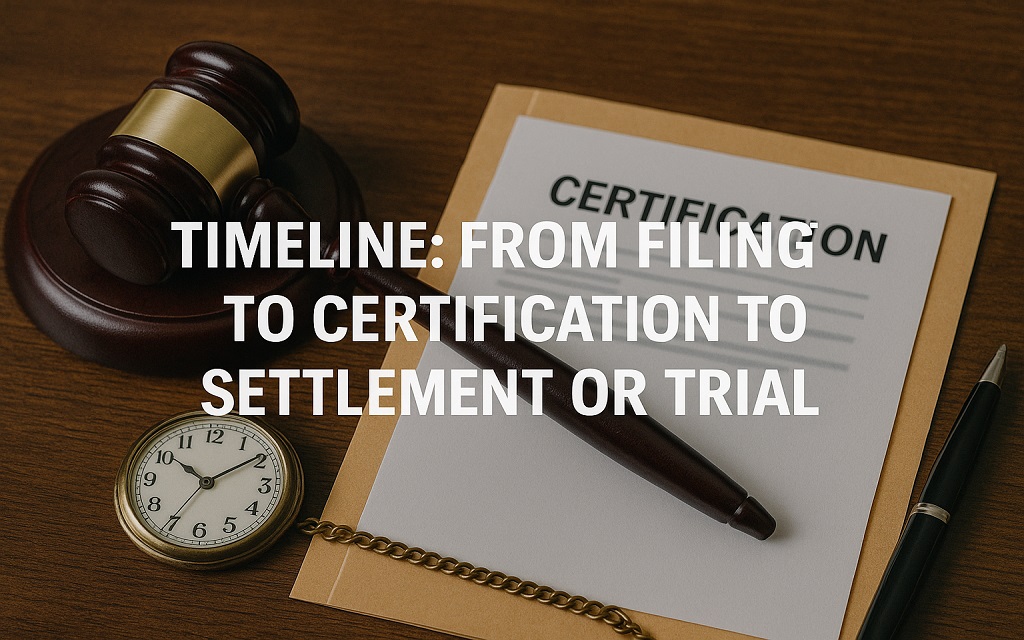
Class actions move slowly. Each stage takes months—or even years. If you follow a Rule 23 Amazon lawsuit, you should know what steps come first and how long they may last.
Filing the Complaint
The lawsuit starts when the plaintiffs file a complaint in federal court. This document lays out:
- Who the class members are
- What Amazon allegedly did
- What relief do the plaintiffs seek
Amazon responds with a motion to dismiss. This may delay the case by several months.
Class Certification Stage
If the case survives dismissal, the plaintiffs file a motion for class certification. This is the key stage. It can take a year or more. Both sides file briefs, expert reports, and data models.
The court may hold a hearing. The certification decision can make or break the case.
Discovery Phase
Before or alongside certification, the parties exchange evidence. This includes:
- Seller fee data
- Search and ranking records
- Internal Amazon policies
- Expert economic analysis
Discovery often runs for many months. In complex antitrust cases, it can stretch for years.
Settlement Negotiations
If the court grants certification, pressure builds. Amazon faces a trial risk with millions of claims at once. This is when most class-action settlements occur. Talks may start earlier, but real movement comes after certification.
A settlement requires preliminary approval, notice, objections, and a final approval hearing. This process can take an additional 6–12 months.
Trial and Appeals
If no settlement occurs, the case goes to trial. Trials in class actions are rare but possible. They may last several weeks. Afterward, appeals can add years of delay.
Claims and Distribution
Once the court grants final approval of a settlement, payments begin. Class members may file claims online or through mailed forms. Distributions often roll out within 3–6 months after approval. Some cases require multiple rounds.
Sample Timeline for a Rule 23 Amazon Case
| Stage | Estimated Timeframe |
|---|---|
| Complaint filed | Month 0 |
| Motion to dismiss resolved | Months 6–12 |
| Class certification motion | Months 12–24 |
| Certification ruling | Months 24–30 |
| Settlement talks | Months 24–36 |
| Preliminary approval | Month 36+ |
| Final approval hearing | Month 42+ |
| Distribution of payments | Month 48+ |
This timeline shows why patience matters. Rule 23 class actions against tech giants are complex. Relief—whether in the form of money or injunctions—may not arrive quickly.
Who May Be Eligible in the Amazon Class and What Evidence Helps
Not every buyer or seller will qualify for relief. In a Rule 23 class action, the class definition decides who gets included. Courts approve this definition during certification. It tells people exactly what time period, conduct, and harm matter.
If you bought or sold through Amazon, you should understand how eligibility works—and what proof you may need.
Who Might Qualify?
Eligibility depends on the case’s focus. Based on the FTC complaint and antitrust theories, two main groups could form classes:
1. Amazon Sellers
You may qualify if you:
- Sold products through Amazon Marketplace
- Paid referral fees, FBA fees, or ad fees during the class period
- We were penalized for pricing your products lower on other platforms
- Lost the Prime badge for refusing to use FBA
- We were pushed to spend more on ads to stay visible
These sellers may be part of a class seeking damages or injunctive relief.
2. Amazon Buyers
You may qualify if you:
- Bought items on Amazon where cheaper options were hidden or suppressed
- Paid more due to alleged price-fixing mechanisms (like Project Nessie)
- Shopped during a period when search rankings favored Amazon’s own brands over third-party listings
This buyer class would likely focus on overcharges—small on each purchase but large in total.
What Documents Help Prove Eligibility?
To receive a payment or respond to a class notice, you may need to provide basic records. Most claims use self-verification, but backup helps.
If you’re a seller, keep:
- Monthly fee statements from Amazon
- Sales reports
- FBA shipment invoices
- Ad spend breakdowns
- Screenshots of listing placement or Prime eligibility changes
If you’re a buyer, keep:
- Order history
- Receipts showing specific item prices
- Email confirmations
- Screenshots of product listings during the class period
Amazon accounts often let you download these files. If a claims website opens in the future, it may allow uploads for verification.
Special Groups
Some people may fall into edge cases:
- Sellers with hybrid pricing across platforms
- Buyers who used third-party price trackers
- International customers with cross-border issues
Courts will address these later, possibly by creating subclasses. These are smaller groups within the main class, tailored to unique facts.
If you’re unsure, it’s still advisable to track your records now. Once the class period and terms are final, you’ll know where you stand.
How Rule 23 Interacts With State Consumer Laws and Antitrust Claims
Many class actions don’t rely on just one law. Rule 23 is a federal rule. It controls how the lawsuit proceeds—not what regulations apply. The underlying claims can come from state law, federal law, or both.
In Amazon-related cases, plaintiffs may mix federal antitrust statutes with state consumer protection laws. This adds complexity. But Rule 23 still controls the process.
State Laws Often Strengthen the Case
Amazon operates in every U.S. state. That gives plaintiffs the option to use local statutes. These laws often:
- Protect buyers from unfair or deceptive acts
- Give sellers rights under local commerce codes
- Allow extra damages or attorney’s fees
For example:
- California’s Unfair Competition Law (UCL) bans practices that are unlawful, unfair, or fraudulent. A class could use this to challenge Amazon’s price-parity policy.
- New York’s General Business Law § 349 protects consumers from deceptive business conduct. It applies even without a formal contract.
- The Illinois Consumer Fraud Act targets any practice that misleads consumers or businesses. It could cover buried search results or biased ad placement.
In some states, even minor harms can lead to class-wide claims if the conduct is systemic.
What Courts Do With Many State Laws
If one class contains claims from all 50 states, courts sometimes split it into subclasses. These are smaller groups based on:
- State of residence
- Type of product sold or purchased
- Dates of affected conduct
This helps avoid legal conflicts. Each subclass can apply its own rules while staying in one lawsuit.
Courts may also certify the class under one state’s law if it applies broadly—for example, if Amazon’s policies were written in Washington and apply equally nationwide.
Preemption and Federal Antitrust
Most Amazon lawsuits also rely on federal antitrust law, such as the Sherman Act or Clayton Act. These claims deal with monopoly power, price-fixing, and market exclusion.
Federal law preempts state law when the two conflict. But courts often allow both to proceed together under Rule 23 if they serve different goals.
Example:
- A buyer class could use federal law to show Amazon harmed competition
- At the same time, it could use state law to claim unfair pricing practices
Amazon’s Likely Defenses and How Courts Evaluate Them
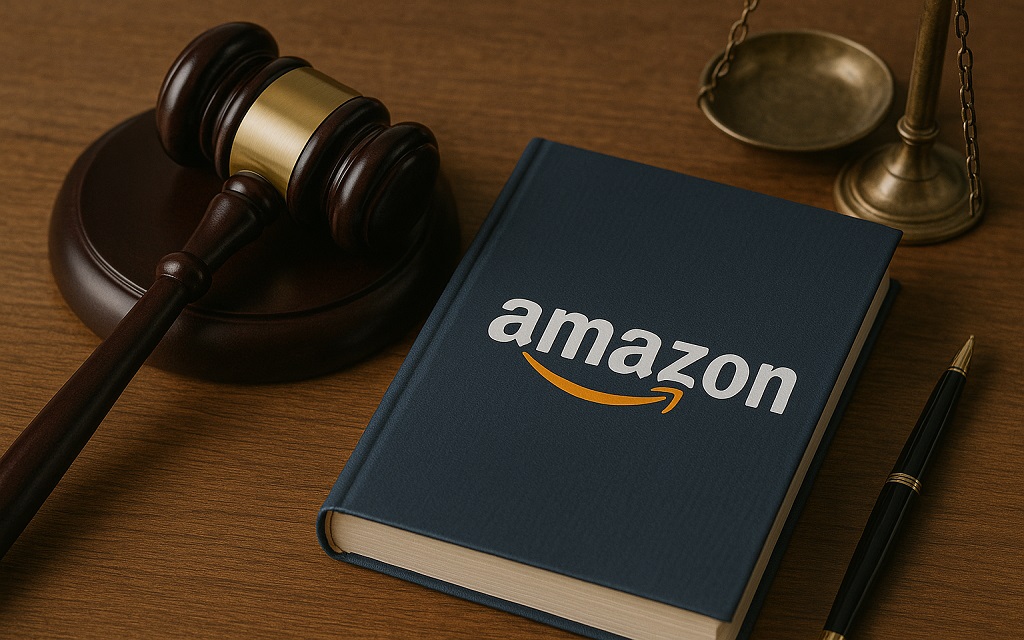
Amazon will not stay quiet in a class action. It has the legal tools—and the motivation—to fight certification, liability, and damages. Courts expect large defendants to push back hard, especially when the class could include millions of buyers or sellers.
Here’s how Amazon may defend itself in a Rule 23 class action—and how courts decide if those defenses defeat the case.
1. Market Definition Disputes
To win any antitrust claim, plaintiffs must define the market. They must show where Amazon has power—and how that power hurts competition.
Amazon may argue:
- The market is too broad or too narrow
- It competes with eBay, Walmart, Target, and direct-to-consumer brands
- Its policies are pro-competitive, not exclusionary
If the court agrees that the market includes many strong players, it may conclude that there is no monopoly power. But if plaintiffs prove Amazon controls key channels for sellers and shoppers, the case moves forward.
Courts often leave market definition to trial unless the flaws are apparent.
2. Individualized Issues
Amazon may say each user is too different for class treatment:
- Sellers use different pricing, fulfillment, and ad strategies
- Buyers shop for millions of different products, each with its own price
- Not every class member saw the same harm
Courts respond by asking: Do common questions still dominate?
If plaintiffs offer a standard model of impact—like fee inflation or price suppression—they may win. However, if damages vary significantly by user, the class could fail the predominance test under Rule 23(b)(3).
3. Arbitration and Class Action Waivers
Amazon includes arbitration clauses in many user and seller agreements. These often include class action waivers, which say:
“You waive your right to bring or join a class action. You agree to individual arbitration.”
If the court enforces these clauses, affected users can’t join the class. Courts analyze:
- When the agreement was signed
- Whether the clause was clear and mutual
- Whether federal or state law limits arbitration for public policy reasons
Some courts allow class actions to proceed for people who never clicked “accept” or whose contracts have expired. Others stay the case and force arbitration.
4. Pro-Competitive Justifications
Amazon may argue its policies help customers:
- Lower prices due to platform consistency
- Faster delivery via FBA
- Safer transactions through Prime screening
- Better search experience with sponsored content
This is a defense against monopoly claims. Courts weigh harm vs. benefit. If the rule reduces competition but improves service, the result may depend on consumer impact.
5. Lack of Standing
Amazon may claim some users were not harmed at all. If a buyer found a better deal, or if a seller gained sales volume despite the fees, Amazon may say:
“You’re not injured. You don’t belong in the class.”
Courts determine whether the alleged conduct was likely to cause harm to the class. If yes, they allow the case to move forward and leave edge cases for trial or subclassing.
MDL vs Class Action: What Readers Should Know
When lawsuits grow big, courts use tools to manage them. Two standard options are class actions under Rule 23 and multidistrict litigation (MDL). Both can apply to Amazon, depending on the number of people who file cases and their location.
These tools may look similar—but they work very differently.
What Is a Class Action?
One person filing a lawsuit on behalf of an entire group is known as a class action. The action proceeds as a single unit if the court certifies the class in accordance with Rule 23. A final ruling or settlement binds everyone—unless they opt out.
Key features:
- One case, one trial
- One judge oversees the whole matter
- Class members may get notice and payment
- Claims must meet strict Rule 23 standards
What Is an MDL?
An MDL, or multidistrict litigation, consolidates multiple separate lawsuits from various courts. The cases all share common issues. A special panel selects one federal court to handle pretrial steps, such as discovery and motions.
Key features:
- Each case stays separate
- The court does not decide class certification unless someone files one
- After discovery, cases may settle or go back to their original courts for trial
MDLs often include personal injury, data breach, or product defect cases. They help courts manage complexity.
Could Amazon Cases Use Both?
Yes. If many users sue Amazon in different states, the Judicial Panel on Multidistrict Litigation (JPML) may centralize the cases in one court.
At the same time, lawyers may ask the court to certify a Rule 23 class within the MDL. The court then decides whether a class action makes sense within the larger case group.
MDL vs Class Action: Quick Comparison
| Feature | Rule 23 Class Action | MDL (Multidistrict Litigation) |
|---|---|---|
| Who brings the case? | One person on behalf of many | Many people have separate lawsuits |
| How many trials? | One unified trial | Each case may go back to its court |
| Does Rule 23 apply? | Yes | Only if class certification is sought |
| Notice to members? | Required | Not required for non-class MDLs |
| Opt-out rights? | Yes | Not needed unless the class is certified |
| Common in antitrust? | Yes | Less common, but possible |
Why This Matters to Amazon Users
If Amazon faces multiple lawsuits over the same practices, courts may combine them in an MDL. This allows faster rulings on:
- Motions to dismiss
- Discovery disputes
- Expert evidence
From there, the court may decide whether to certify a class. That’s where Rule 23 returns.
Understanding both systems helps users know what to expect—and how relief may reach them.
Practical Steps if You Think You Are in the Class
If you’ve sold or bought products on Amazon, you may be part of a future Rule 23 class. You don’t need to act right away. But you should prepare now. That means saving records, understanding your rights, and watching for updates.
Here’s what you should do—even before the court certifies the class.
1. Gather Your Records
Start by collecting basic documents that show your connection to Amazon.
Sellers should save:
- FBA invoices
- Monthly sales statements
- Ad spend summaries
- Product listings and fees paid
- Screenshots showing price suppression or Prime eligibility loss
Buyers should save:
- Amazon order history
- Receipts showing item prices
- Product comparison screenshots
- Emails confirming purchases
- Any refund or return data
If you ever saw higher prices on Amazon than on other sites—or noticed product rankings change after sales spikes—keep screenshots.
2. Watch for Class Notices
Once the court certifies the class and approves notice, you’ll receive a message. That may come by:
- In-app message (if Amazon helps with delivery)
- A public website linked to the claims process
Notices explain your rights. They also include deadlines for opting out or submitting a claim.
If you receive a notice, read it carefully. Please don’t delete it. Please don’t assume it’s spam.
3. Check the Class Period and Definition
The notice will define the group. For example:
- Sellers who used FBA from 2019 to 2023
- Buyers who purchased consumer goods on Amazon between 2020 and 2023
If you fall in that range, you’re likely part of the class.
4. Decide Whether to Stay In or Opt Out
Most people stay in. That gives you a share of the settlement or verdict. You lose the right to sue Amazon separately for the same issue—but you also avoid legal fees or time in court.
You should consider opting out only if:
- You lost more than average
- You want to file your own case
- You disagree with the lawsuit’s strategy or goals
The notice will explain how to opt out. Follow it exactly. Late or incorrect requests will be denied.
5. Follow the Case Progress
Use official sites to track updates. Avoid fake claims websites or phishing emails.
You can also check:
- PACER (for public court documents)
- FTC or DOJ press releases
- News from legal blogs or trusted outlets
Some law firms also post case trackers. Use caution if they ask for personal info.
Payout Calculations and Distribution Methods

If the court approves a class action settlement against Amazon, the next big question becomes: How much will I get? Rule 23 allows several ways to divide money among class members. The court must approve any plan. It must be fair, reasonable, and based on actual harm.
Let’s break down how payouts typically work—and what to expect in an Amazon case.
Pro Rata Distribution: The Most Common Method
Most class action payouts follow a pro rata model. This means each member gets a share based on how much they were affected.
For example:
- A seller who paid $50,000 in FBA and ad fees may get more than one who paid $5,000
- A buyer who made 100 purchases may receive more than one who made 5
Each claim is weighted based on the level of damage. Then the fund is split proportionally.
Sample Seller Payout Tiers (Hypothetical)
| Tier | Fees Paid During Class Period | Estimated Share |
|---|---|---|
| Tier 1 (Low) | $1,000–$9,999 | $50–$150 |
| Tier 2 (Medium) | $10,000–$49,999 | $200–$700 |
| Tier 3 (High) | $50,000+ | $1,000+ |
These amounts change based on the total fund size and the number of valid claims filed. It also depends on deductions for fees, admin costs, and service awards.
What About Buyers?
Buyer payouts are usually smaller because each loss is lower. But they add up across millions of transactions.
For example:
- A buyer who made 20 purchases during the class period might get $15–$30
- A buyer with high-ticket items could get more—if proof of overcharge exists
Some settlements skip individual payouts and offer credits instead—like gift cards or discounts. Courts must approve these, too.
Required Proof
Most claims require basic verification:
- Sellers: Amazon seller ID, fee totals, FBA usage dates
- Buyers: Order history, receipt uploads, email confirmation
Many claims portals auto-verify this using account info. Others require manual uploads.
What Happens If There’s Leftover Money?
Class funds sometimes end with extra money. This happens when:
- Fewer people file claims than expected
- Some claims are denied
- Fees come in lower than estimated
Courts then choose what to do with the remainder:
- Second-round payments to valid claimants
- Cy pres donations to nonprofits related to the case
- Reversion to Amazon (rare and often disfavored)
Judges prefer second-round payments or cy pres awards. They avoid giving money back to the defendant unless necessary.
Timing of Distribution
Once final approval is granted:
- Claims are verified (takes 2–4 months)
- Checks or direct deposits are sent (within 3–6 months after verification)
- A claims hotline or website tracks progress
Class members should keep addresses and contact info current.
Opt-Out Strategy: When an Individual Claim Might Make Sense
Most people stay in a Rule 23 class action. They want a share of the settlement without hiring a lawyer or going to court. But for some, opting out may bring a better result—especially if the harm is significant or unusual.
Let’s look at when you should consider going your own way.
Who Might Want to Opt Out?
You should consider opting out if:
- You lost far more than the average class member
- You want to negotiate directly with Amazon
- You disagree with the legal claims or strategy
- You missed the class period, but have a related claim
- You signed an arbitration clause and want to challenge it in court
This often applies to high-volume Amazon sellers. If your losses are in the tens or hundreds of thousands, a class payout may not match your harm. You may want to sue Amazon directly.
Also, if your business relied on Prime placement and lost sales due to algorithmic changes or ad costs, your damages might include future loss—something class actions rarely pay for.
Pros of Opting Out
- You control your case
- You may recover more than the average class member
- You can seek emotional distress or reputational harm (if relevant)
- You avoid being bound by the class settlement terms
- You can present your full evidence to a judge or jury
Cons of Opting Out
- You must hire your own lawyer
- You bear the risk and cost of litigation
- You may wait longer to resolve your claim
- You lose access to the class settlement
- Your claim may get dismissed on procedural grounds
There’s also no guarantee the class case will succeed. If it loses, opt-outs may also struggle—especially if courts reject the theory of harm.
What You Must Do to Opt Out
The class notice will explain the process. Usually, you must:
- Send a signed letter or online form
- Include your name, address, and claim ID (if provided)
- State that you wish to opt out of the class
- Please send it to the correct address by the deadline
Miss the deadline, and you stay in the class automatically.
Sample Opt-Out Scenario
Let’s say you’re a seller who:
- Paid $300,000 in FBA and ad fees in 2022
- Lost Prime status due to platform rule changes
- Had evidence that competitors paid less for similar placement
You might recover only a few thousand from the class. But your actual harm could be much higher. Opting out and suing individually might let you claim:
- Lost sales
- Lower brand visibility
- Damage to long-term customer trust
This won’t be easy—but it may be worth it.
International Buyers and Sellers: What Changes
Amazon operates in dozens of countries. Buyers and sellers often cross borders. But Rule 23 class actions are part of U.S. federal civil procedure. That means international users face unique challenges.
Knowing how your location impacts your rights is crucial, whether you reside or conduct business outside of the US.
Are International Users Part of the Class?
Not always. Courts may limit the class to:
- U.S. residents
- Transactions that occurred inside the United States
- Contracts governed by U.S. law
International users might still qualify—but only if the harm connects clearly to U.S. markets.
For example:
- A UK-based seller who used Amazon.com (U.S. site) and paid FBA or ad fees might qualify
- A Canadian buyer who used the U.S. site for cross-border shipping might also qualify
- But a German buyer using Amazon.de likely falls outside the class
Jurisdiction: Can U.S. Courts Hear the Case?
To sue in a U.S. federal court, the court must have personal jurisdiction over the parties. Amazon is based in the U.S., so that part is simple. But international class members must show their harm involved:
- U.S. platforms
- U.S.-based policies
- Economic effects inside U.S. markets
Courts often reject claims based entirely on foreign law or overseas behavior.
Choice of Law: Which Rules Apply?
Even if international users join the class, courts must decide which laws govern:
- U.S. federal antitrust laws may apply if the effects reach the U.S. market
- State consumer laws may not apply to foreign residents unless they transact in that state
- Amazon’s contracts may include choice-of-law clauses pointing to Washington state law
These clauses can limit recovery. But they may also offer a clear path to class membership for foreign parties.
Enforcement Challenges
Even if international class members win a share of the payout, problems can follow:
- Currency conversion
- Foreign banking rules
- Mailing issues
- Local tax and disclosure laws
Claims administrators may need extra documentation. They may offer slower or limited distribution to non-U.S. parties.
In some cases, class settlements exclude foreign residents to avoid legal complications. Notices will make this clear.
What International Users Should Do
If you’re a buyer or seller outside the U.S.:
- Check if you used Amazon.com (not just local versions)
- Review any contracts signed with Amazon Services LLC
- Track the product listings, fees, and sales linked to the U.S. marketplace
- Save all cross-border transaction records
Once the class is certified, review the notice carefully. If international users are excluded, you may need to sue on your own or join a separate proceeding in your home country.
Compliance and Future Risk: What Businesses Learn From Rule 23

When a Rule 23 class action targets a major company like Amazon, the impact spreads. It’s not just about payouts or court orders. Companies and their rivals are forced to change their business methods as a result of these lawsuits.
This section is crucial if you administer digital markets, sell online, or operate an e-commerce platform. Rule 23 lawsuits send a message: unchecked policies can lead to significant legal risk.
Lessons for Amazon and Other Platforms
Amazon faces allegations of:
- Punishing sellers for offering better prices elsewhere
- Tying Prime eligibility to its own fulfillment service
- Manipulating search and ad visibility to favor in-house brands
- Charging fees that reach up to 50% of seller revenue
Whether Amazon settles or fights in court, the pressure is clear. Platforms must:
- Reevaluate “most favored nation” (MFN) or price parity clauses
- Avoid bundling services in ways that limit seller choice
- Create fair, algorithm-driven search and ad ranking systems
- Set transparent, consistent fees backed by performance data
If not, they risk lawsuits under Rule 23—along with investigations from regulators like the FTC or DOJ.
Impact on Sellers and E-Commerce Businesses
Amazon’s scale forces sellers to comply with its rules. But after a lawsuit, many sellers ask: “What can I do to protect myself?”
Key strategies:
- Keep detailed records of fees, product pricing, and account changes
- Avoid total dependence on one platform
- Push back on contract terms that tie visibility to expensive services
- Monitor your listing placement and ad results over time
- Ask platforms for transparency in how rankings and fees are calculated
Lawsuits like this prompt sellers to demand clearer contracts—and give regulators a stronger incentive to investigate platform behavior.
Risk for Startups and Marketplaces
If you run a growing platform, Rule 23 shows what to avoid:
- Don’t punish users for competing elsewhere
- Don’t tie critical tools (like search access or badging) to paid services
- Don’t bury cheaper or better options without disclosure
- Don’t charge hidden or cumulative fees that are hard to track
Create internal compliance programs. Document policy goals. Get a legal review on any rule that limits price freedom or platform switching.
The Bigger Picture
Rule 23 class actions help enforce fairness—especially when market power creates a gap between platform and user.
Even if Amazon defeats the case, the lawsuit changes expectations. Buyers now ask how search works. Sellers want more control. Platforms face new pressure to open up.
Key Takeaways and Next Steps
- Rule 23 class actions let one case stand for many. They apply when a large group suffers the same harm.
- The Amazon case may include both sellers and buyers. It centers on platform fees, price suppression, and algorithm control.
- The FTC lawsuit supports private Rule 23 claims. It lays out conduct that affects a broad class of users.
- Certification is key. Without it, the class cannot proceed. Plaintiffs must prove common harm and fair methods of proof.
- You should save your records now. This includes receipts, fees, order history, and ad spending.
- Watch for notices. If the court certifies the class, you’ll be told how to opt out or file a claim.
- Be cautious with emails. Only trust official court-authorized sources.
- High-value sellers may want to opt out. This gives you the right to bring your own case for higher recovery.
- The lawsuit may lead to policy changes. Even without payouts, a court order could reshape how Amazon operates.
- Stay informed. Rule 23 lawsuits move slowly, but their outcome can significantly impact your rights and business.
Conclusion
Rule 23 Amazon lawsuit allows flexibility. Plaintiffs can bring unified class claims even when laws vary. But courts must make sure each law is applied correctly. That’s why legal teams often propose subclasses, state groupings, or legal “tracks” to simplify the trial.
In the Amazon context, expect lawsuits to mix both federal and state claims. This maximizes coverage. It also helps sellers and buyers in every state seek relief.
Disclaimer: This article provides a general overview of the Rule 23 Amazon lawsuit, based on publicly available information, and is intended for informational purposes only. It is not legal advice.

